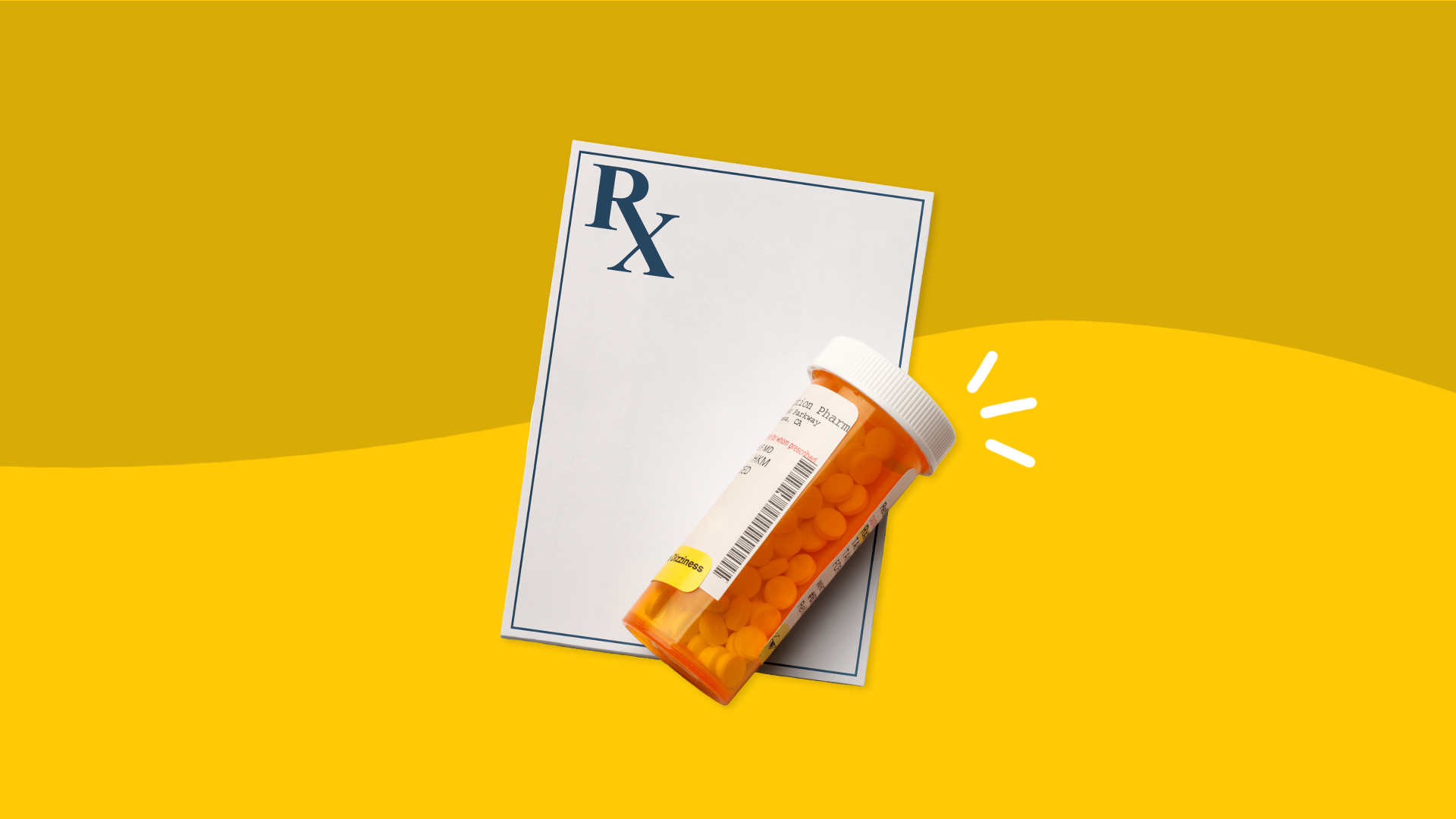Xarelto side effects | Serious side effects | Bleeding | Reversal | How long do side effects last? | Warnings | Interactions | How to avoid side effects Resources
Xarelto is a brand-name prescription oral anticoagulant used to treat deep vein thrombosis (DVT) and pulmonary embolism (PE). It can also be used to prevent deep vein thrombosis in people at risk for blood clots, including people who are hospitalized with an illness and those who are undergoing hip replacement surgery or knee replacement surgery. Xarelto is also FDA-approved to reduce the risk of stroke and other problems from blood clots in people diagnosed with nonvalvular atrial fibrillation, coronary artery disease, or peripheral artery disease.
Xarelto contains the active ingredient rivaroxaban and works to slow the formation of blood clots. It is classified as a factor Xa inhibitor that works by blocking one of the proteins, called factor Xa (“10-A”), involved in the blood clotting process. Oral anticoagulants like Xarelto are effective for treating and preventing blood clots, but they have some side effects to be aware of.
RELATED: What is Xarelto? | Get Xarelto discounts
Common side effects of Xarelto
The most common side effects of Xarelto are:
- Bleeding
- Back pain
- Abdominal pain
- Dizziness
- Itching
- Tiredness
Serious side effects of Xarelto
The most serious side effects experienced with Xarelto are:
- Severe bleeding
- Bleeding around the spinal cord (epidural or spinal hematoma)
- Bleeding in the eye (ocular hemorrhage)
- Low platelet counts (thrombocytopenia)
- Low numbers of certain types of white blood cells (agranulocytosis)
- Severe allergic reactions
- Liver problems, including hepatitis
Xarelto and bleeding
To prevent dangerous blood clots from forming in the blood vessels or heart, Xarelto blocks the blood-clotting process. However, Xarelto’s effects can make people vulnerable to uncontrolled bleeding. As a blood thinner, Xarelto can cause minor bleeding events, such as prolonged bleeding from a cut, bruise, or nosebleed. In some cases, Xarelto can cause major bleeding events that could be life-threatening and require emergency hospitalization. Some types of bleeding episodes can go unnoticed because they happen inside the body, such as in the intestines.
Serious bleeding events are rare with Xarelto, and there is a lower risk of major bleeding with Xarelto versus other anticoagulants like enoxaparin and warfarin. In clinical studies, 1% of people taking Xarelto for DVT or PE treatment experienced a major bleeding episode. It’s important to call a healthcare provider or get emergency medical help at any sign of a bleeding problem, even if it seems minor. An antidote called Andexxa (andexanet alfa) is available to help treat life-threatening bleeding problems caused by Xarelto. Once administered, the antidote quickly reverses Xarelto’s effects on blood-clotting.
Xarelto reversal
The Xarelto antidote can quickly reverse Xarelto’s effects on blood clotting in cases of prolonged bleeding and internal bleeding. It can also be used to reverse the effects of Xarelto to prepare a person for emergency surgical procedures, dental procedures, spinal surgery, spinal puncture, epidural procedures, or the removal of a spinal catheter. If needed, Andexxa will be administered by a healthcare provider. Andexxa works by blocking the ability of rivaroxaban to bind to factor Xa, restoring the body’s natural ability to form blood clots. Andexxa is also approved to reverse the effects of another factor Xa inhibitor called apixaban (Eliquis).
How long do side effects last?
The side effects of Xarelto are generally mild and temporary. Side effects may go away within a few days to a couple weeks after taking the drug consistently. If side effects are particularly bothersome or severe, you should seek medical advice from your healthcare provider.
The terminal half-life of rivaroxaban is five to nine hours in healthy people. That’s the time it takes for the body to eliminate half a dose of Xarelto, but this may take longer in elderly patients or people with liver disease or kidney problems. The effects of rivaroxaban on blood clotting will start to fade after 24 hours.
Serious adverse events, such as allergic reactions and severe bleeding episodes, require immediate medical attention. Severe bleeding in certain parts of the body, such as the eyes or brain, could have lifelong complications.
However, stopping a blood-thinner like Xarelto increases the risk of blood clots, so this medicine should never be discontinued unless you’re instructed to do so by your healthcare provider.
Xarelto contraindications & warnings
Anticoagulants carry a risk of bleeding and serious injury. This risk can go up in people with certain medical conditions, such as liver problems, kidney problems, and antiphospholipid syndrome (APS). It’s important to familiarize yourself with Xarelto warnings and precautions before taking Xarelto.
Abuse and dependence
The U.S. Food and Drug Administration (FDA) does not consider rivaroxaban to be a drug that has a risk of physical dependence, misuse, or abuse. While Xarelto does not cause withdrawal symptoms, the risk for blood clots significantly increases when the medicine is stopped. It is recommended to use another anticoagulant while discontinuing the use of Xarelto to lower the risk of blood clots.
Overdose
An overdose on Xarelto will increase the risk of bleeding. However, concentrations of rivaroxaban in the blood don’t go up further after doses exceed 50 mg, so there is an upper limit to an overdose. If too much Xarelto is taken, a Xarelto antidote can reverse the effects of the anticoagulant. Call a poison helpline or get medical attention if an overdose is suspected.
Restrictions
Most injuries and deaths caused by oral coagulants like Xarelto are due to severe bleeding episodes. Healthcare professionals, then, may avoid prescribing the drug to people at a high risk for bleeding.
Xarelto contraindications include pre-existing medical conditions that make rivaroxaban too risky to take. Xarelto may be avoided in people with:
- Active major bleeding: Xarelto can worsen an existing bleeding crisis.
- Moderate to severe liver impairment: Because the liver metabolizes rivaroxaban, moderate to severe liver problems can increase levels of Xarelto in the blood and increase the risk of bleeding.
- Coagulopathy-associated liver disease: Coagulopathy is a liver problem that can decrease the ability of the body to form blood clots, so taking rivaroxaban may increase the risk of severe bleeding episodes with this problem.
- Severe kidney impairment: The kidneys are partly responsible for eliminating rivaroxaban from the body. Severe kidney impairment raises the risk for severe bleeding.
- Severe allergic reactions to Xarelto: Xarelto may cause serious allergic reactions, including anaphylaxis, in those who are allergic to any ingredients in the drug.
Although not contraindicated, Xarelto is generally avoided or used with great caution in people with:
- A high risk for bleeding: Healthcare providers will assess the risk for bleeding and may not prescribe Xarelto if there are too many risk factors for bleeding problems. These risk factors include uncontrolled high blood pressure, recent surgery, heart disease, diabetes, alcohol abuse, and others.
- Mechanical heart valve: People with a prosthetic heart valve may have an increased risk of bleeding or blood clots when taking Xarelto.
- Antiphospholipid syndrome: An autoimmune condition associated with lupus, triple positive antiphospholipid syndrome puts people at a higher risk for blood clots when they’re taking Xarelto.
- Some types of pulmonary embolism: Xarelto may be avoided in people with pulmonary embolism who also have poor circulation or unstable blood pressure.
Other pre-existing conditions may require closer monitoring for side effects or possibly reduced doses. These include:
- Mild liver impairment
- Mild to moderate kidney problems
- A moderate risk for bleeding
Unlike other anticoagulants such as warfarin, there are no dietary restrictions or rules prohibiting dietary changes for Xarelto.
Pregnancy and nursing
Healthcare providers may prescribe Xarelto with caution in pregnant and nursing women. There is a risk that Xarelto can cause maternal bleeding and emergent delivery, as well as possible harm to the fetus. There are no laboratory tests that can closely track the effects of Xarelto on blood clotting. Pregnant women should always discuss with a healthcare professional the risks and benefits of taking oral anticoagulants when pregnant. Even if a pregnancy is not being planned, the prescribing healthcare provider may need to assess a woman of reproductive age for uterine bleeding risks while taking Xarelto.
It hasn’t been determined if Xarelto is safe to take when breastfeeding. Rivaroxaban is present in human breast milk, but healthcare providers are uncertain about the risks to the nursing baby. Women who are breastfeeding should talk to their healthcare provider about the possible risks and alternative anticoagulants.
Children
The U.S. Food and Drug Administration has not approved the use of Xarelto in children.
Seniors
People older than 65 can take Xarelto in the same doses as younger adults. In clinical trials, however, older patients were more likely to experience bleeding or blood clot problems than younger adults.
Xarelto interactions
Like most prescription drugs, Xarelto can interact with other prescription drugs, over-the-counter medications, dietary supplements, and herbal remedies.
The most serious side effect of Xarelto is bleeding, so the most serious Xarelto drug interactions involve drugs that interfere with the body’s ability to form blood clots. These drugs include:
- Defitelio (defibrotide), a blood-thinner, and Mifeprex (mifepristone), a drug used to end a pregnancy, are usually avoided with Xarelto because of an increased risk for severe bleeding
- Other anticoagulants
- Aspirin and aspirin-containing medicines
- Nonsteroidal anti-inflammatory drugs (NSAIDs)
- Selective serotonin reuptake inhibitors (SSRIs)
- Serotonin and norepinephrine reuptake inhibitors (SNRIs)
Some drugs significantly increase the risk for bleeding because they inhibit the body’s ability to break down Xarelto. Strong CYP3A4 inhibitors may need to be discontinued, but weaker ones may be taken at lower doses. Drugs that are especially strong at inhibiting the breakdown of rivaroxaban include:
- Certain antibiotics like erythromycin
- Certain antifungal medications such as ketoconazole and itraconazole
Some HIV drugs like ritonavir
Finally, some drugs, including barbiturates (like phenobarbital), some anticonvulsants (like carbamazepine or phenytoin), and some antibiotics (like rifampin), speed up the body’s metabolism of rivaroxaban, making patients more vulnerable to blood clots. These drugs may need to be avoided while taking Xarelto. In some cases, these drugs may need to be changed or the doses reduced before taking Xarelto.
Be careful: some commonly-used supplements like St. John’s wort can also interact with Xarelto. St. John’s wort can speed up the metabolism of rivaroxaban and increase the risk of blood clots.
How to avoid Xarelto side effects
All oral anticoagulants carry risks for side effects. There are, however, ways to minimize these risks.
1. Take Xarelto as directed
As always, the best advice when taking prescription drugs is to follow the instructions given by a healthcare provider. Don’t take too much, too little, or skip a dose. However, a healthcare provider’s instructions for taking Xarelto can be complicated, so not only the dosing can change, but other aspects of taking the medicine may be adjusted as well.
When should the dose be taken?
Xarelto is sometimes taken once per day or twice per day; sometimes a specific time of day may be prescribed.
Should the dose be taken with food?
Sometimes, patients will be told they have a choice. However, when people are taking higher doses (15 mg tablets or 20 mg tablets), Xarelto must always be taken with food. When Xarelto is being used to reduce the risk of stroke in someone with nonvalvular atrial fibrillation, the tablet should be taken with an evening meal.
Should other drugs be taken?
Sometimes, Xarelto has to be taken with aspirin. A healthcare provider will tell you how much and when the aspirin should be taken.
What happens if I miss a dose?
If you normally take a 10 mg, 15 mg, or 20 mg Xarelto tablet once per day, take the missed dose as soon as it’s remembered but skip it if it’s almost time for the next dose. If you normally take the 15 mg Xarelto tablet twice daily, you can take a double dose to make up for a missed dose. If you normally take the 2.5 mg Xarelto tablet twice daily, skip the missed dose and take the next one at the regularly scheduled time. Make sure you understand the healthcare provider’s instructions about taking missed doses. Getting this wrong could cause serious problems.
2. Read the medication guide
Xarelto always comes with a medication guide. Read this carefully each time you fill a prescription. Anticoagulants can cause nleeding problems that can rapidly evolve into serious medical emergencies. Internal bleeding problems may not be recognized immediately. The medication guide provides information on what to watch out for and when you need to get medical attention while taking this drug.
3. Tell the doctor about all medical conditions
You should give your prescribing healthcare provider a complete and accurate medical history before starting Xarelto. Make sure the prescribing healthcare provider knows about:
- Any history of bleeding problems
- Liver problems
- Kidney problems
- Pregnancy or pregnancy plans
- Breastfeeding or breastfeeding plans
4. Tell the healthcare provider about all medications being taken
Taking some drugs with Xarelto can significantly increase the likelihood of bleeding episodes, so tell the prescribing healthcare professional about all prescription drugs, over-the-counter medications, and supplements you’re taking, particularly:
- Aspirin or aspirin-containing products
- NSAIDs
- Other blood thinners like Coumadin (warfarin), Plavix (clopidogrel), or Lovenox (enoxaparin)
- SSRIs
- SNRIs
5. Get medical help at any sign of bleeding problems
The most serious problem with anticoagulants is bleeding, which can happen anywhere in the body and quickly escalate into an emergency medical situation. Internal bleeding is not easily detected, so it’s important to know the signs of bleeding problems. Even minor external bleeding events, like frequent nosebleeds, can indicate there’s a potential serious problem. Get medical attention at any sign of a bleeding problem such as:
- Severe bleeding
- Frequent or prolonged nosebleeds
- Frequent or prolonged bleeding from the gums
- Heavier-than-normal menstrual bleeding
- Unexplained vaginal bleeding
- Bleeding in the urine (pink, red, or brown urine)
- Bleeding in the stools (bright red or black and tarry stools)
- Coughing up blood or blood clots
- Vomiting up blood (bloody vomit) or blood clots (“coffee grounds” vomit)
- Headaches, dizziness, fainting, or weakness
6. Do not stop taking Xarelto
The sudden discontinuation of Xarelto can increase the risk of blood clots. Try not to skip a dose and never stop taking Xarelto until you’ve talked to a doctor.
Resources
- Andexanet alfa for the reversal of factor Xa inhibitor activity, New England Journal of Medicine
- Getting started with Xarelto, Janssen
- Metabolic benefits of rivaroxaban in non-valvular atrial fibrillation patients after radiofrequency catheter ablation, Journal of Zhejiang University Science B
- QuarterWatch, July 12, 2017, Institute for Safe Medication Practices
- Rivaroxaban compound summary, U.S. National Library of Medicine
- Rivaroxaban drug summary, Prescriber’s Digital Reference
- Xarelto, Epocrates
- Xarelto prescribing information, U.S. National Library of Medicine











